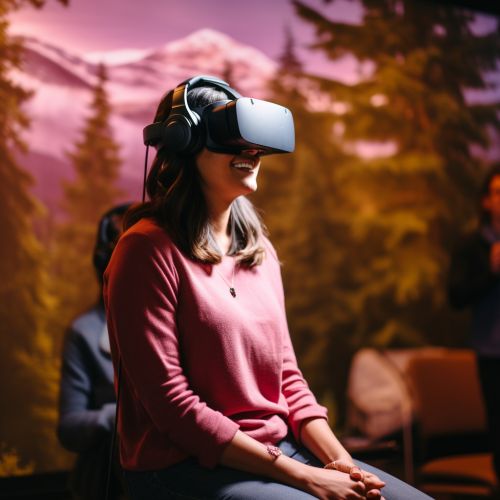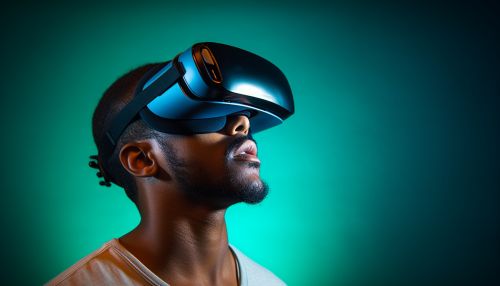Cybersickness
Introduction
Cybersickness, also known as virtual reality sickness, is a condition characterized by symptoms similar to motion sickness experienced in the context of virtual environments. It is a complex syndrome that can include a wide range of symptoms such as nausea, disorientation, headaches, and fatigue.
History
The term "cybersickness" was first coined in the early 1990s as the use of virtual reality (VR) technology began to increase. It was initially observed in individuals using head-mounted displays for VR, and was later seen in users of other immersive technologies.
Causes
The exact cause of cybersickness is not fully understood, but it is believed to be related to a mismatch between the visual information being presented to the user and the user's perception of their own movement. This is similar to the mechanism believed to underlie motion sickness. Other factors that may contribute to the development of cybersickness include the quality of the virtual environment, the user's level of immersion, and individual differences in susceptibility.
Symptoms
The symptoms of cybersickness can vary widely between individuals, but often include:
- Nausea
- Disorientation
- Headaches
- Fatigue
- Eye strain
- Dizziness
- Sweating
- Pale skin
- Increased salivation
- Postural instability
Diagnosis
Diagnosis of cybersickness is typically based on the presence of characteristic symptoms following exposure to a virtual environment. There are no specific diagnostic tests for cybersickness, but various scales and questionnaires have been developed to assess the severity of symptoms.
Treatment
There is currently no specific treatment for cybersickness, but various strategies can be used to manage symptoms. These may include taking breaks from the virtual environment, using anti-nausea medications, and using techniques to reduce the mismatch between visual input and perceived movement.
Prevention
Prevention strategies for cybersickness are largely focused on reducing the mismatch between visual input and perceived movement. This can be achieved through various means, such as improving the quality of the virtual environment, reducing the level of immersion, and using techniques to enhance the user's sense of presence in the virtual environment.


